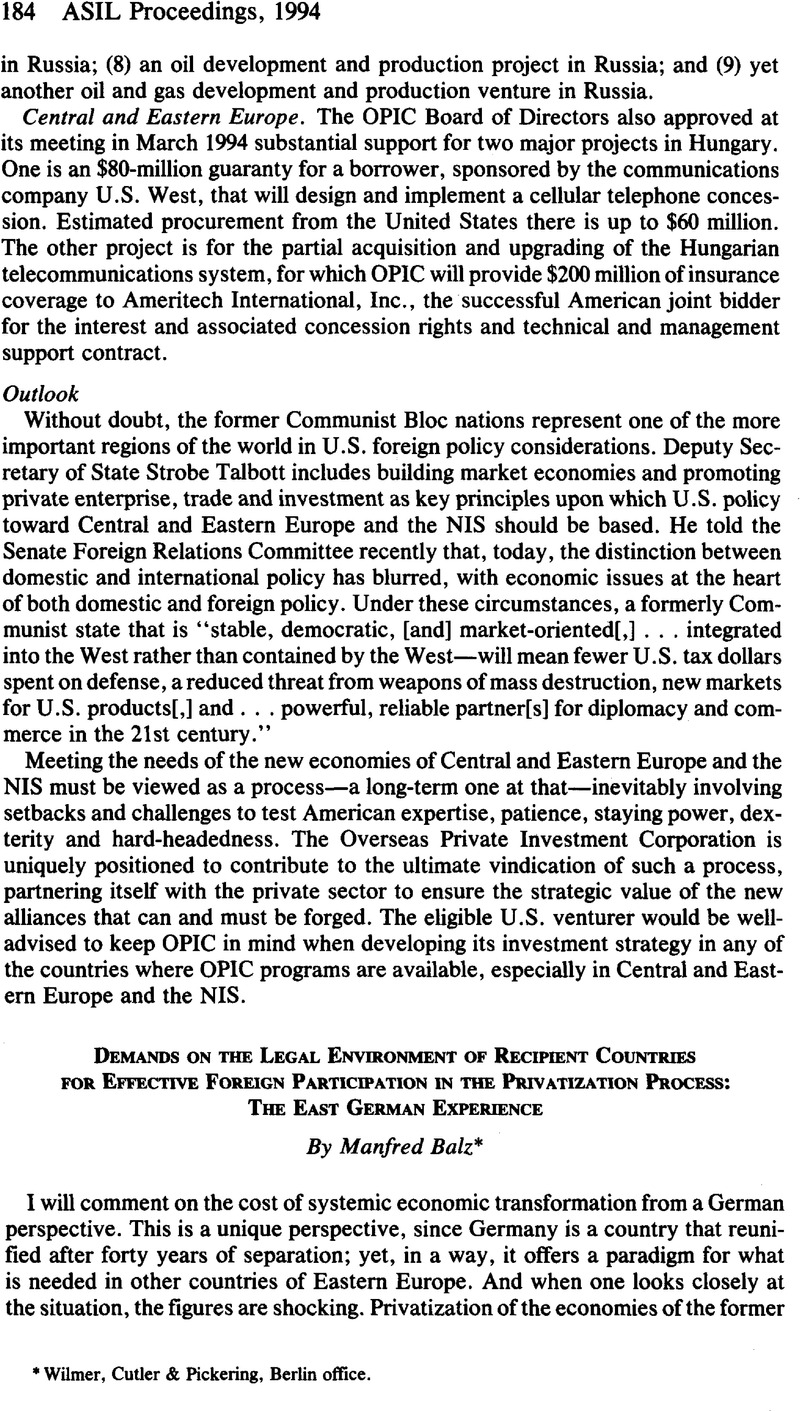No CrossRef data available.
Published online by Cambridge University Press: 28 February 2017

1 For more detail on the sequencing of political and economic reforms in East Germany and on the political components of privatization, see Balz, Manfred, Privatization in Central and Eastern Europe (1992) in 3 CEEPN Annual Conference Series 122 (Bohm & Simoneti eds., 1993)Google Scholar.
2 Most of the debt is assumed at the moment of balance confirmation, the remainder at the moment of privatization
3 Usually, private investors assume risks up to a certain minimum amount (i.e., a “socket”). Beyond this amount, risk-sharing is common (a certain percentage to be borne by the Treuhandanstalt, the remainder by the investor) up to a ceiling, beyond which the investor and the privatized enterprise will not be responsible.
4 The Treuhandanstalt law names objectives such as the creation and maintenance of jobs and efficient market structures, in addition to monetary goals.
5 Poland (I am endebted to Professor Soltysinski of Poznan) and apparently also Russia now seem to recognize the need for direct trade sales of controlling packages in order to find strategic investors and induce capital investment.
6 In Germany, apart from assets expropriated by the Nazis in 1933-1945, only assets expropriated by the socialist GDR government from 1949-1989—some land and essentially small and mid-sized businesses—have been restored to their previous owners, but not the large businesses and agricultural lots expropriated under the Soviet Military Administration (1945-1949). The underlying idea of the German legislature that, in these cases, former owners would return to East Germany as active entrepreneurs proved, however, to be largely fallacious.